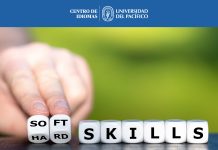One of the most difficult skills to improve is listening. This is true for both the teacher and the students. For the former, it is necessary to find a way to guide students to achieve their objective and, for the latter, they need to find a plan that suits their needs. Definitely, everybody has tried to facilitate the task in class; however, so many times it has met with failure.
“Why is it so difficult to teach listening comprehension? How can we teach it if that´s kind of a “personal” action? Why my students find it so hard to develop this skill?” These are some of the questions I have frequently heard from some of my colleagues. Here are some ideas that could help you to go through this journey.
First of all, we need to stop believing some myths that have been living with us for a long time, probably many years.
MYTH # 1
Listening is a task performed on your own. This is usually thought considering just the act of hearing. It is true; nobody can do that task for you. However, listening is not only hearing; this notion does not reveal the magic of the work involved. Did I say “work?” Yes! You understood well. Work implies a process and that´s the main subject matter here.
Many times we overlook several important facts. We hold the idea that we should provide a lot of material to practise. That´s good! Still, we usually provide a lot of links, exercises and so on to hear. But students are already able to hear without our help!
When listening, two types of processing take place: Top Down and Bottom Up.
Top-down processing happens when we use background information to predict the meaning of the language we are going to listen to or read. That means, that all our experience with the world, all our knowledge and, in this case, our prior knowledge of English and our own language are also used to hypothesize and infer. Metaphorically speaking, we use our “Spanish brain and its background data” to interpret what we listen to in English. Most of us take this processing into account when we have our students predict, do brainstorming, or give us the gist and specific information. Nevertheless, we fail to notice that when listening naturally our students will use any resources available, that is what they know in Spanish. They use their Spanish schemata to understand, to listen in English. This reality takes us to instances in which students misinterpret one word for another.
For example: Real sentence: “We’re not gonna take it” from one of Twisted Sisters´s songs. People learnt the song as “Huevos con aceite.” Take a look at this video. https://youtu.be/35PocLHx534
If you need more examples, just take a look at this: https://youtu.be/_6DD1CU8ltE
Even though this may be hilarious, this is not so much when we, as teachers, do not consider this a fact.
We need to understand what problems arise when students do a listening comprehension exercise. Transferring their Spanish schemata without considering the differences between the two languages is one. We should help students become aware of the similarities as well as of the differences.
Bottom-up Processing: It happens when someone tries to understand language by looking at individual meanings or grammatical characteristics of the most basic unit of the text (e.g. sounds) and moves from this to trying to understand the whole text. We use our linguistic knowledge and ability to process acoustic signals, which we first decode into phonemes, then words, phrases, and finally sentences.
Unfortunately, bottom-up processing is hardly taken into consideration when “teaching” or working on the development of listening skills. We scarcely work with listening sub-skills. How frequently do we propose exercises that enable students to recognize and understand connected speech, word boundaries, weak forms, contractions and so on? For instance, have you ever taught how “of” is pronounced? Have you done that in different contexts? Check this and you will see if your answer is right:
We are so preoccupied about providing the “new vocabulary” that we forget these sub-skills. Again, we need to evaluate what happens (process) when a person tries to understand what they hear, that is, when they try to “listen.” Do you think they just “hear”?
MYTH #2
Listening is a receptive skill, but that does not mean it is passive. When we consider listening a process, we are aware that it involves work and that implies a productive activity. Many times we see ourselves presenting the exercise, giving the instructions and playing the audio until it is over. If we always do that, it will disgracefully be called a passive exercise.
Do brainstorming, for example, before the listening exercise, but do not stop there. It is necessary to help students find the connection of that information with the one they are about to listen to by creating a gap. To do so, make them produce hypotheses of what might happen for instance. Create the need for listening. While listening, students should be asked to show that they are in fact listening. Have them respond to the listening exercise by doing, drawing, choosing from a list, matching, following a route etc. Stop the audio and ask questions about it; you do not have to wait until the audio is over to have them “produce.” A listening exercise must not look like a test in which we want to know who has the right answer, right?
We need to monitor what is happening.
Is there another myth about teaching listening?
Share your expertise with us!
Estimated reading time: 4 minutes, 44 seconds












